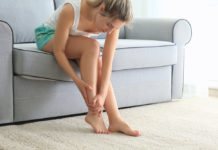Along with the classic risk factors of heart disease, including smoking, high blood pressure and cholesterol, and diabetes, physical inactivity is a predictor of developing heart disease. In contrast, regular physical activity seems to be effective in preventing it.
But how much exercise is supported? Research suggests it takes a mere 1.5 percent of your week to reap the benefits of exercising for heart health!
How Does Exercise Help Your Heart?
The link between exercise and heart disease is well-known, though you may not realize just how exercising for heart health actually materializes.
Think of the heart muscle as a rubber band: When newly manufactured, the band is flexible, pliable, and capable of keeping papers wrapped tightly in a bundle. Stick it an office drawer for 20 years, that elastic band becomes dry, stiff, and essentially incapable of its primary purpose. (And unfortunately, the heart taking this sort of beating is much worse than a scattered, fallen papers on the ground…)
Stiffness and hardening of the heart and its vasculature, also known as atherosclerosis, can cause heart failure, or the inability of the heart to effectively pump blood to the lungs or throughout the body, and increase the risk of heart attack and stroke.
So instead of forgetting about the rubber band in the drawer, keep it strong by getting active!
How Much Exercise for A Healthy Heart?
First and foremost, general recommendations set by the American Heart Association (AHA) encourage at least 30 minutes of moderate-intensity aerobic activity at least 5 days per week (for a total of 150 minutes), at least 25 minutes of vigorous aerobic activity at least 3 days per week (for a total of 75 minutes), or a combination of moderate- and vigorous-intensity aerobic activity.
Including moderate- to high-intensity muscle-strengthening and stretching exercises at least twice a week is also recommended. And ultimately, physical activity is anything that makes you move your body, including brisk walking, jogging, swimming, hiking, playing recreational sports, and participating in interval trainers.
Newer evidence endorses the recommendations set by the AHA, even showing 2.5 hours per week of exercise may lower coronary artery disease by 25 percent in women under the age of 50.
The reported outcome from the AHA was published in Circulation, in which researchers collected data on more than 97,000 women (aged 27 to 44), who took part in the Nurses’ Health Study II. Specifically, the researchers observed the frequency, amount of time, intensity, and type of preferred physical activity among the women. In the 20-year follow-up, 544 cases of heart disease were documented and the researchers found:
- Women who were the most physically active during their leisure time had the lowest risk for heart disease (and starting body weight did not matter)!
- Exercise did not have to be strenuous. In fact, moderate exercise (think brisk walking) was associated with a lower risk of heart disease.
- Workout frequencies did not affect the results, just as long as at least 150 minutes weekly was hit.
Your Heart and Exercise Tips
Consult with Your Primary Care Provider
Before starting any sort of exercise regimen, it is recommended to always consult with your primary care provider for upmost safety.
Start ASAP
The lifestyle choices we make in our earlier years impact the latter half, so be start ASAP! Furthermore, young women who embrace a health lifestyle can significantly impact the health of families, including by getting kids in the kitchen and biking in the neighborhood following dinner.
Do What You Enjoy
The best exercises are ultimately the ones you will do. Don’t love running? Consider these nine effective cardio workouts as alternatives, including swimming, biking, hiking, and dancing. And not to mention, the AHA also backs walking can be just as beneficial as running to a healthy heart!
Give Yourself Active Breaks
Remember, getting active does not have to rely on a 30 to 60-minute stint, as you can break up such frequencies. So instead of sitting on the couch and surfing on social media, give yourself active breaks throughout the day. Additionally, simple and small ways to increase physical activity include taking the steps over the elevator, walking your dog around the neighborhood (also benefits your four-legged friend!), standing up while answering telephone calls and emails, or at least taking a break from the computer each hour!
Fuel Properly
Diet is equally as (if not more) important as exercise, so fuel properly for your workouts and nourish the body with wholesome foods, including whole grains, fruits and veggies, beans and legumes, nuts and seeds, and oils. These tips for eating a heart-healthy diet can also reduce and prevent cardiovascular disease and even stop or reverse it.









